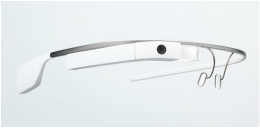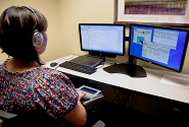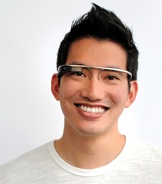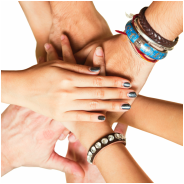- Home
- Videos
- Links
- Working with Interpreters
- Favorite Products
-
Newsletters
- December 2017
- December 2014
- June 2014
- March 2014
- December 2013
- November 2013
- October 2013 Newsletter
- July 2013 Newsletter
- June 2013 Newsletter
- March 2013
- February 2013
- January 2013
- December 2012
- November 2012
- October 2012
- September 2012
- August 2012
- July 2012
- June 2012
- May 2012
- April 2012
- March 2012
- February 2012
- January 2012
- November 2011
- October 2011
- September 2011
- August 2011
- July 2011
- March 2011
- February 2011
- January 2011
- October 2010
- September 2010
- May 2010
- April 2010
- March 2010
- September 2009
- May 2009 Remastered
- April 2009 Remastered
- February 2009 Remastered
- Healthy Body and Soul
- Upcoming Seminars
- More...
- COVID info for Medical interpreters
December 2014 Newsletter
In this edition:
Google Glass
CART Services
Hydration is key
Interpreting and Advocating

Google Glass “Google Glass” or as many people call them, “The Google Glasses,” is an electronic device worn on the head that provides visual, auditory, and voice interaction with the internet. The Google Glass is attached to an apparatus similar, in appearance and function, to a pair of eyeglass frames, only that these do not require lenses. The frame rests on the ears and nose like regular frames. The Google Glass is the small display over the upper and outer corner of one eye. This is a type of wearable technology with an optical head-mounted display (OHMD). Google Glass was developed by Google with the mission of producing a mass-market ubiquitous computer. A ubiquitous computer literally means computers everywhere. It is a concept in software engineering and computer science where computing is made to appear everywhere and anywhere. In contrast to desktop computing, ubiquitous computing can occur using any device, in any location, and in any format. It makes many computers available throughout the physical environment, while making them effectively invisible to the user. Ubiquitous computing is held by some to be the Third Wave of computing. The First Wave was many people per computer; the Second Wave was one person per computer. Google Glass displays information in a smartphone-like hands-free format. Wearers communicate with the internet via natural language (English) voice commands. The Google Glass Explorer Edition (see photo below) was released to Google Glass Explorers (a community for open public discussion of the Google Glass Explorer Edition) in the United States on April 15, 2013 for a limited period for $1,500, before it became available to the general public on May 15, 2014 for the same price. Google provides four prescription choices of lenses for $225.00 and the lenses are free with the purchase of any new Google Glass unit. It is necessary to remove a small screw in order to move the Google Glass from one frame to another. Google entered into a partnership with the Italian eyewear company Luxottica, owners of the Ray-Ban, Oakley, and other brands, to offer additional frame designs. Who knows... maybe someday we can even have Google Contact Lenses. For more information on “Google Glass” visit Wired Magazine. 
Hydration is Key Hydration is critical to maintain a healthy hearth (if a person is well hydrated, the heart doesn’t have to work as hard,) a clear mind, and to avoid urinary tract infections. Keeping the body hydrated helps the heart pump blood more easily through the blood vessels to the muscles and it helps the muscles work efficiently. The human body is nearly two-thirds water so it is very important to consume enough fluid to stay hydrated and healthy. If you don’t get enough fluid you may feel tired, get headaches and not perform at your best. ‘Fluid’ includes not only tap (filtered is best) or bottled water (natural spring water is best), but also other drinks that give you water such as decaffeinated tea, milk, and fruit juices. People obtain water from food they eat. On average, food provides about 20% of a person’s total fluid intake. The amount of fluid a person needs depends on many things including the weather, amount of physical activity, and age, but European recommendations suggest 1.6L of fluid per day for women and 2L of fluid per day for men. This is on top of the water provided by the food a person eats. Dehydration can be a serious ailment leading to problems ranging from swollen feet or headaches to life-threatening illnesses such as heat stroke. A person suffering from dehydration may become confused, dizzy, or even faint. A person who perspires heavily will need to drink more than someone who does not perspire. People suffering from diabetes or heart disease may need to drink more water. People with cystic fibrosis have high concentrations of sodium in their sweat and need to use caution to avoid dehydration. Some beverages and medications can act as diuretics causing the body to lose more fluid. Thirst isn’t the best indicator that a person needs to drink. Many doctors say that the easiest thing to do is to watch the color of one’s urine. Urine should be yellow. Pale and clear means a person is well hydrated, but if the urine is dark, one should drink more water. Signs of dehydration:
Staying hydrated is not just about having enough liquid in the body. It is the minerals in the beverage that are necessary for internal hydration. Sodium, potassium, and magnesium, among others, are minerals with electric charges (electrolytes.) Electrolytes are in the blood and other body fluids, and affect the amount of water retained within the body, the acidity of the blood (pH), muscle function, and other important processes. People lose electrolytes when they sweat, yet already consume plenty of certain minerals in their daily diets, such as sodium. It is important to maintain a healthy sodium/potassium balance. A quick way to destabilize the sodium-potassium ratio is consuming a diet based on processed foods. These foods are notoriously low in potassium while high in sodium. They are also loaded with fructose, which is clearly associated with the increase of heart disease. The human body needs a healthy level of potassium to maintain proper pH levels in body fluids, and potassium also plays an integral role in regulating blood pressure. Potassium deficiency may be more responsible for hypertension than excess sodium. Potassium deficiency leads to electrolyte imbalance and can result in a condition called hypokalemia. Symptoms of potassium deficiency may include:
In order to stay healthy and remain hydrated, one should drink 8 to 10 cups of liquid per day. Watch the color of urine to detect over or de-hydration. Avoid processed foods, which are very high in processed salt and low in potassium and other essential nutrients. Instead, try to cook your meals and chose healthy snacks that are whole-foods, ideally organic and locally-grown to ensure optimal nutrition. When adding salt, use a natural salt with iodine or sea salt. Himalayan salt may contain lower sodium and higher potassium levels compared to other salts. Avoid caffeinated and alcoholic beverages as a source of hydration, since consuming these liquids may have a diuretic effect. Drink water after drinking coffee,tea, or alcoholic beverages. |

The next generation in remote interpreting: Remote foreign-language CART
The definition of the term “translation” for stenographers is not the same as for foreign language interpreters. Communication Access Real-time Translation or CART is the instantaneous translation (transformation) of the spoken language into text, then displayed in various forms. Text is produced with less than a two-second delay. For example, a CART writer sits next to a student in a classroom and listens to the instructor and transcribes all that is heard, and the text is displayed on the computer screen so the student can read along. Communication Access Real-Time Translation (CART,) also called open captioning or real-time stenography, or simply real-time captioning, is the general name of the system that court reporters, closed captioners, and others use to convert speech to text. A trained operator uses keyboard or stenography methods to transcribe spoken speech into written text. CART services are offered in many courts to assist clients in mediation that are able to speak but are hard of hearing, such as those who use powerful hearing aids. Real time speech to text serves many people that have reduced hearing abilities and who are deaf. If a person is deaf plus does not understand English, he or she may be able to attend a court or quasi court event if assisted by a foreign-language CART operator. Do these angels exist? Yes, they do! I once came across a consumer that became completely deaf at an adult age and English was not the consumer's native language. While working with a great team I researched and tested various options including Dragon-text-to-Speech software, mask microphones, and court interpreter/court reporter teams. Finally, there was light at the end of the language access tunnel… a company that offered foreign-language CART services. It consisted of high-level bilingual transcribers or captioners that listen to the foreign language and transcribe, in real-time, all that is heard in that same foreign language for the deaf non-English speaker to read on a computer screen. Foreign language CART operators work on-site or remotely. When working remotely, the most safe and reliable method is to use a voice connection such as a land-line telephone, cellphone, or digital telephone to send the voice to the operator and then the real-time text is transmitted by the operator back over the internet using an online application. Currently, the majority of the foreign language CART operators are for Spanish. A professional or team of professional English-Spanish interpreters is still required to interpreter everything from English into Spanish. CART professionals have qualifications for added expertise (speed and accuracy) as compared to court reporters and other stenographers. Some people use CART as the short form of Computer Assisted Real-time Transcription. The service is identical. In other countries, CART may be referred to as Palantype, Velotype, STTR (speech to text reporting). English is spoken > Interpreter interprets everything from English into Spanish> CART operator hears Spanish over the phone and types in Spanish into his/her stenography machine> Spanish text appears on screen in front of the deaf non-English speaker almost immediately. Interpreting and Advocating Bilingual employees and volunteers are invaluable to private and public institutions and to the community in general. Many professional interpreters started their careers this way, acting as a bridge between people who speak different languages. Bilingual advocates such as attorneys, victims’ advocates, etc. are very important in helping people seek support, protection, assistance, and justice. They communicate comfortably with their non-English speaking clients providing them with a contained and familiar environment. Advocates however sometimes find themselves being asked to interpret between their own client and a third party. This should be avoided unless a professional interpreter is unavailable. Advocates should strongly refrain from interpreting in court hearings since the guiding principle of these hearings is impartiality. When an advocate interprets, he/she must switch roles; the advocate must now remain impartial and respect the decisions of the person they were just advocating for. Doing this can be very challenging. Even if accomplished, the impression of bias may still prevail. This is why courts, arbitrators, hospitals, to mention a few, use professional interpreters. Professional interpreters are trained and experienced in these matters. Professional court interpreters perform based on strict codes of ethics which include tenets such as confidentiality, linguistic competence, impartiality, professional growth, ethical business practices, and awareness of the rights of participants to informed choice. Lets please all work together. Happy Holidays!
Bonne année Bonne santé
Felices Fiestas Hạnh phúc ngày lễ 節日快樂 Masaya pista opisyal Laethanta saoire sona Trevlig Helg! Boas Festas! 행복 휴일 Hau’oli Lanui Furaha likizo 幸せな休日 חג שמח Buone Feste! |


